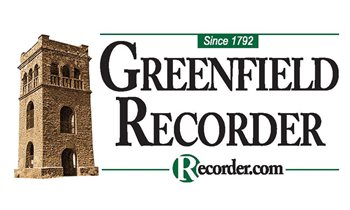My Turn: The life and death of a cookbook

| Published: 05-25-2025 11:12 PM |
It was 1976, an election year as well as the first year of my marriage. We were to live in an apartment complex. The apartments had two bedrooms, an overly large living room, a closet disguised as a kitchen and just enough space for a table for four adults. In other words, pretty much the opposite of what I would choose. I visited on a weekend three weeks before the wedding and suggested we look in a neighborhood established during the early years of the 20th century. “But my mother picked this out for us,” he said. “A place for the elderly,” I answered.
I had the wardrobe and the education I needed to make a start in journalism. I had my own ideas about how to decorate an apartment. I looked forward to making friends. I wanted to learn where to go for a good dinner, but, more to the point, I wanted to learn what the French ate.
When I discovered a bookstore just a city block from the complex and complete with a coffee shop next door, I was smiling from ear to ear. I searched the book store’s shelves regularly. It was where I discovered Margaret Atwood. When I finished reading “Surfacing,” I told my husband about it. He called his mother and said, “I have your next book. It’s called Surfacing.” I hid in the bedroom and thought about cookbooks. Unfortunately, the neighborhood gem did not sell cookbooks.
After the snows melted, we drove deep into New Hampshire and stopped to admire the view. At the edge of the road, above a deep valley was a tiny white house with delicate wood trim. Inside were books, books and more books. Here I found my long-sought volume, “French Provincial Cooking” by Elizabeth David.
Elizabeth’s books were far from the sort of cookbooks my mother bought during the 1950s. Those books tried too hard to keep up with the latest fads of tableware and appliances photographed in their lurid colors. They also pushed the idea of the lady of the house who cooked while wearing high heels, as well as half-aprons trimmed with ruffles.
Elizabeth’s books are meant to teach. She began as a researcher, traveling about a Europe rising from World War II and finally seeing the end of food rationing. On a stroll through the Sunday market in Toulouse, she found a small book, “Secrets de la bonne table.”
Elizabeth presents information on history of the various regions she visited to learn from home cooks as well as from the professionals. She also offers information on kitchen equipment, such as the now familiar whisk and the equally familiar spatula, once known as a palette knife. She also describes less well-known tools, like the mandoline, which is not the instrument but a slicing tool.
To make French food, the book announces that one needs “Herbs, Spices, Condiments, etc., used in French Cookery.” What follows are 400 pages of recipes, sorted by categories.
Article continues after...
Yesterday's Most Read Articles
 Mohawk Trail students to see new staff, new codes of conduct upon Aug. 27 return to school
Mohawk Trail students to see new staff, new codes of conduct upon Aug. 27 return to school
 Bear-y unwelcome: Why MassWildlife says it’s time to ‘break up’ with bird feeders
Bear-y unwelcome: Why MassWildlife says it’s time to ‘break up’ with bird feeders
 ‘A place that’s just for us’: Greenfield mom to become homeowner through Habitat for Humanity build
‘A place that’s just for us’: Greenfield mom to become homeowner through Habitat for Humanity build
 New library at 38 Avenue A in Turners Falls preferred over Carnegie renovation
New library at 38 Avenue A in Turners Falls preferred over Carnegie renovation
 Meeting physician retention goals: Two Greenfield Family Medicine Residency grads stay local
Meeting physician retention goals: Two Greenfield Family Medicine Residency grads stay local
 My Turn: Spectre of public and affordable as scare tactics
My Turn: Spectre of public and affordable as scare tactics
Folded corners demonstrate how often I used the book as we regularly invited friends to dinner. “French Provincial Cooking” did not remain the only foreign-based cookbooks in the cupboard. Joining Elizabeth were Simone Beck, Richard Olney, Tamasin Day-Lewis, Betty Fussell, Lidia Bastianich, and, of course, Julia Child.
As kids came along, my cooking changed. Meals continued to be homemade but simpler. There were other changes. My husband and I divorced. Upon graduation from high school, the kids chose a gap year. All the cookbooks tended to remain on their shelves.
About a week ago, the shelves under the large window revealed the many things that fell behind them. One was a paperback book, its pages a deep brown. It was “French Provincial Cooking.”
What was once so inspiring shows it age as well as its flaws. As I thumbed through it, I realized the entire book was printed in what seems to be 8-point type. Post cataract surgery, I’m not certain I can read this. Food and cooking have changed. I generally eat while sitting at my computer. Still, it will be difficult to recycle a book that carried so many memories.
Susan Wozniak has been a caseworker, a college professor and journalist. She is a mother and grandmother.






 My Turn: There is something we can do: Emergency campaign launched for children of Gaza
My Turn: There is something we can do: Emergency campaign launched for children of Gaza Columnist Daniel Cantor Yalowitz: Searching for solitude, safety and peace in a world gone crazy
Columnist Daniel Cantor Yalowitz: Searching for solitude, safety and peace in a world gone crazy
